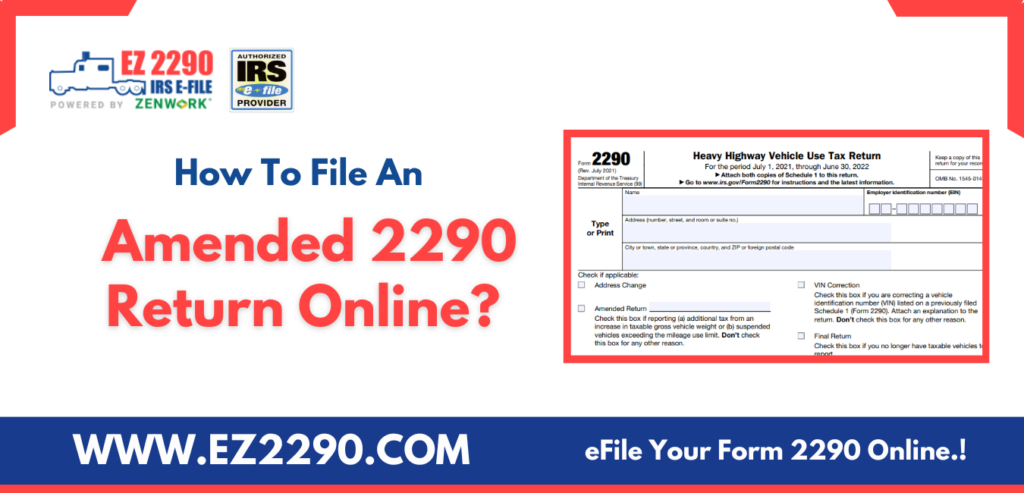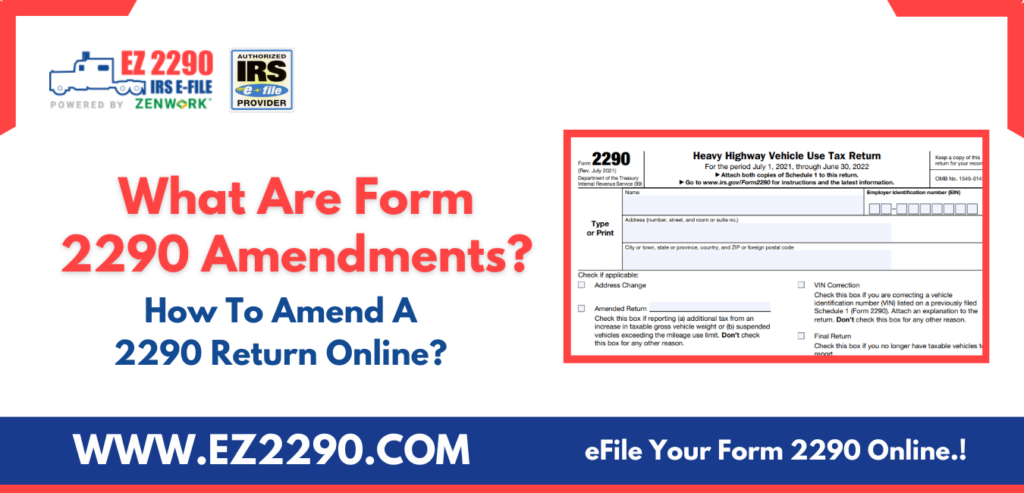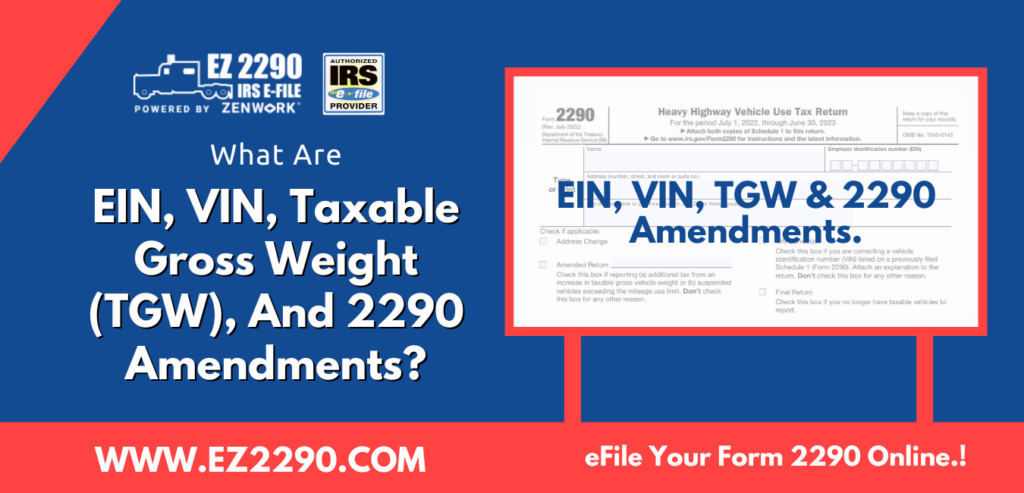
Whether you made a mistake on your initial filing or your vehicle’s status has changed, filing a Form 2290 Amendment is crucial for avoiding penalties and keeping your business on track. In this comprehensive guide, we’ll walk you through the amendment process step-by-step, so you can revise your form with ease and thrive as a successful trucking business owner.

Running a successful trucking business comes with a lot of responsibilities, including staying on top of all the necessary paperwork. One of the most important documents you’ll need to file is Form 2290, which reports and pays the Heavy Vehicle Use Tax (HVUT) to the IRS.
However, mistakes can happen, and sometimes you need to make changes to your initial filing. That’s where the Form 2290 Amendment comes in. In this comprehensive guide, we’ll take you through everything you need to know about filing a Form 2290 Amendment, so you can avoid penalties and keep your business running smoothly.
Let’s get started!
What Is the Form 2290 Amendment?
Form 2290 Amendment is a way for trucking business owners to make changes to their initial Form 2290 filing with the IRS. The Heavy Vehicle Use Tax (HVUT) is reported and paid through Form 2290, and it is an annual tax on heavy vehicles weighing 55,000 pounds or more that use public highways.
But, mistakes can happen, or circumstances can change, and sometimes you need to make changes to your initial filing. By filing a Form 2290 Amendment, you can avoid penalties and stay in compliance with IRS regulations.
eFile 2023-24 Form 2290 & Get Schedule 1
Types of Form 2290 Amendments
There are three main types of Form 2290 Amendments that are VIN Correction, Taxable Gross Weight Increase, and Suspended Vehicle Exceeds Mileage. In this section, we will talk about each one of these in detail.
Increase In Taxable Gross Vehicle Weight
If the taxable gross weight of your vehicle increases after you’ve filed your Form 2290, you’ll need to file a Taxable Gross Weight Increase Amendment and pay the additional tax. This amendment is necessary because the amount of Heavy Vehicle Use Tax (HVUT) owed is based on the weight of the vehicle.
To file a Taxable Gross Weight Increase Amendment, you’ll need to provide the IRS with the new taxable gross weight and the month in which the weight increase occurred. You’ll also need to pay the additional tax owed based on the new weight. The tax is prorated based on the number of months left in the tax period after the weight increase.
Suspended Vehicles Exceeded The Mileage Use Limit
If you have a suspended vehicle that exceeds the mileage limit of 5,000 miles during the tax period, you’ll need to file a Suspended Vehicle Exceeds Mileage Amendment and pay the tax. A suspended vehicle is one that is expected to travel less than 5,000 miles during the tax period, and therefore is not subject to the Heavy Vehicle Use Tax (HVUT).
To file a Suspended Vehicle Exceeds Mileage Amendment, you’ll need to provide the IRS with the vehicle identification number (VIN) of the vehicle that exceeded the mileage limit and the month in which the limit was exceeded. You’ll also need to calculate and pay the tax owed based on the number of miles the vehicle exceeded the limit. The tax is prorated based on the number of months left in the tax period after the mileage limit was exceeded.
eFile HVUT Form 2290 For 2023-24 Tax Year
Incorrect VIN
If you made a mistake in the Vehicle Identification Number (VIN) when you filed your initial Form 2290, you’ll need to file a VIN Correction Amendment to correct the VIN. The VIN is a unique identifier for each vehicle, and it’s important to ensure that it’s accurate on all tax documents.
To file a VIN Correction Amendment, you must provide the IRS with the correct VIN and the reason for the correction. You’ll also need to indicate whether you’re correcting a VIN that was previously reported as an incorrect VIN on Form 2290 filed for the same tax period.
It’s important to note that you’ll need to file a VIN Correction Amendment as soon as you discover the mistake to avoid any penalties or interest charges. The IRS may also require you to provide documentation to support the correction, such as a copy of the vehicle registration or title.
Easily eFile Form 2290 Amendments Using Ez2290
eFiling your Form 2290 Amendments can save you time and hassle, and Ez2290 makes it easy to file online. Ez2290 is a user-friendly, IRS-authorized e-file provider that allows you to file your Form 2290 Amendments quickly and securely.
To e-File your Form 2290 Amendments using Ez2290, simply log in to your account or create a new account if you’re a first-time user. Then, select the type of amendment you need to file and enter the required information, such as the corrected VIN or the new taxable gross weight.
By using Ez2290 to e-file your Form 2290 Amendments, you can save time, avoid errors, and receive your Schedule 1 quickly and securely.
File HVUT Form 2290 Online For 2023-24
Conclusion
In conclusion, filing Form 2290 Amendments correctly and on time is crucial to avoiding penalties and keeping your business running smoothly.
Whether you need to correct a VIN, report a taxable gross weight increase, or address a suspended vehicle that exceeded the mileage limit, it’s essential to understand the requirements and file the necessary amendments promptly.
Following the tips and guidelines outlined in this comprehensive guide, you can revise your Form 2290 as needed and thrive in your business endeavors. And by using a trusted e-file provider like Ez2290, you can simplify the process and ensure that your amendments are filed accurately and efficiently.








